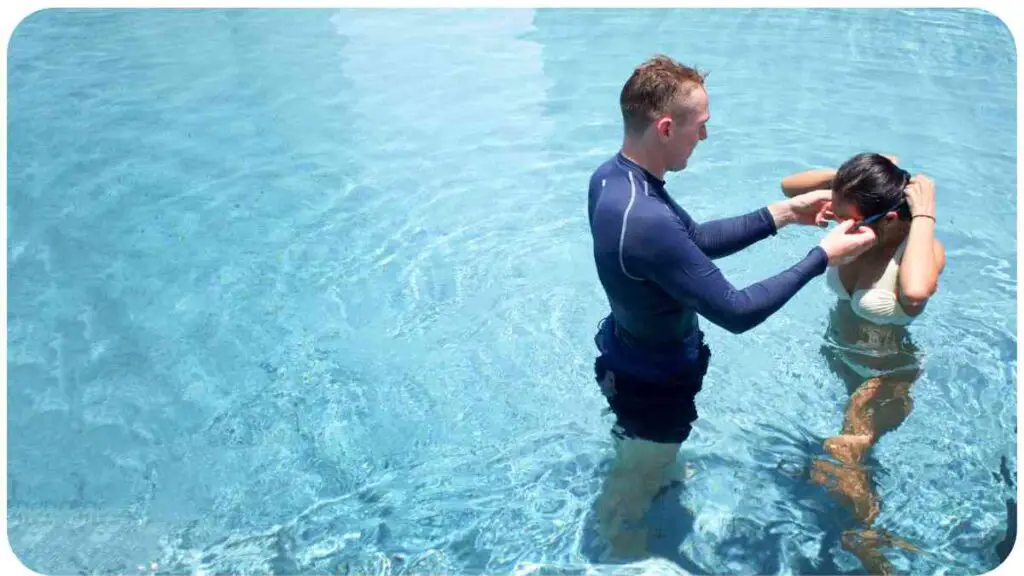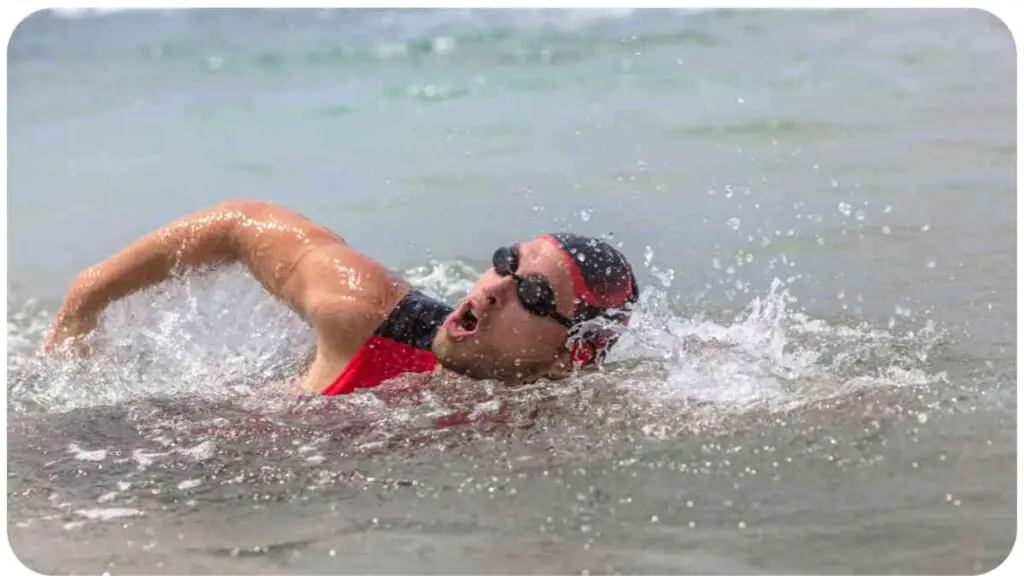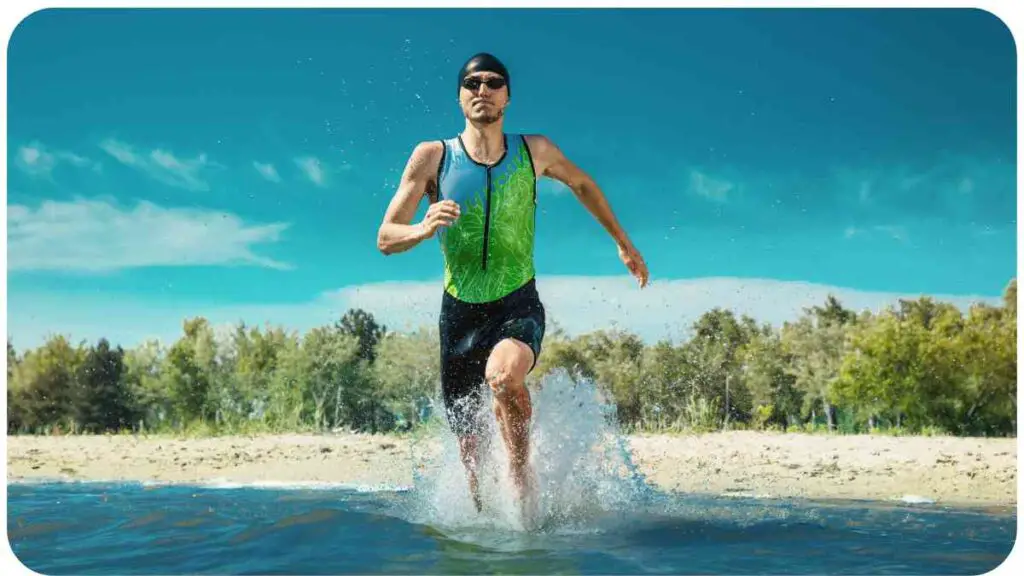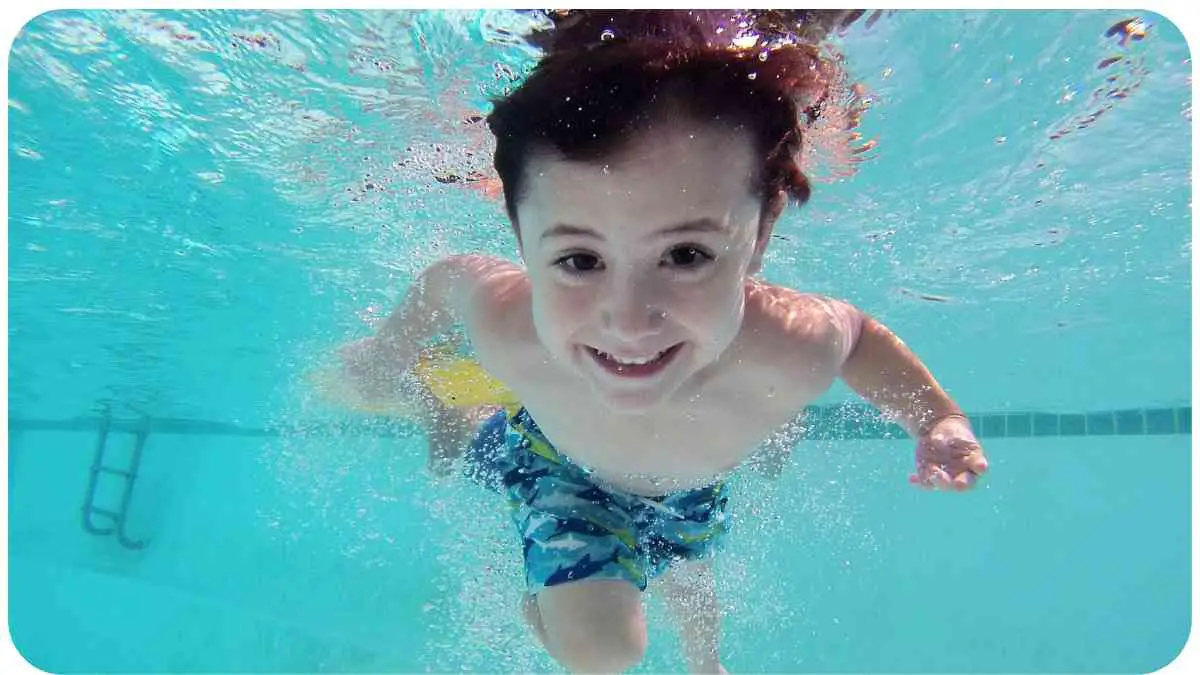1. Introduction: The Beauty and Challenge of Swimming
Ah, swimming! It’s not just a sport or a pastime—it’s an art, a dance with water. How many of us have marveled at the effortless grace of a seasoned swimmer or yearned for the soothing embrace of the water after a long day? Yet, for all its appeal, swimming comes with its unique set of challenges.
| Benefits of Swimming | Common Obstacles |
| Cardiovascular health improvement | Breathlessness |
| Muscle toning and strengthening | Technical errors |
| Mental relaxation | Fear of deep waters |
| Weight management | Environmental factors (e.g., currents) |
| Enhances flexibility | Equipment malfunctions |
2. Understanding the Basics of Swimming

Before we dive deep (pun intended) into the intricacies of swimming challenges, it’s imperative to grasp the basics. Just like you wouldn’t start a journey without knowing the destination, you shouldn’t jump into the pool without understanding fundamental techniques.
Exploring the world of fitness and technology, we find that adding cycling data to your Health App can significantly enhance your workout tracking experience. Learn how to streamline your fitness journey with this insightful guide.
| Fundamental Swimming Techniques | Description |
| Freestyle (or Front Crawl) | Most common and efficient stroke |
| Breaststroke | Characterized by its “frog kick” |
| Backstroke | Swum entirely on the back |
| Butterfly | Requires synchronous arm movement |
3. Physical Challenges in Swimming
Swimming may look seamless, but it demands a lot from our bodies. Remember the first time you tried swimming a full lap? That breathlessness, the muscle fatigue—that’s all part of the journey.
3.1. Overcoming Breathlessness
Breathing is fundamental, yet it’s one of the first obstacles many face. The secret lies in rhythmic breathing and turning your head at the right time. Practice makes perfect!
Are you a cycling enthusiast concerned about muscle cramps? Discover if and how biking can help with cramps. Explore the potential benefits and strategies for a more comfortable and enjoyable ride.
3.2. Battling Physical Fatigue
Swimming engages multiple muscle groups, making it a fantastic full-body workout but also leading to quick fatigue. The key? Build endurance over time and listen to your body.
| Swimming Stroke | Associated Fatigue Level | Muscles Mainly Used |
| Freestyle | Moderate | Shoulders, arms, hips, legs |
| Breaststroke | High | Chest, legs, neck |
| Backstroke | Low | Back, legs, arms |
| Butterfly | Very High | Entire upper body |
4. Mental Hurdles in the Pool
Mind over matter, they say. Well, in swimming, the mind matters a lot!
4.1. The Fear of Drowning
It’s natural. Water is not our native habitat. But with consistent exposure and practice, this fear can be conquered.
4.2. Overcoming Performance Anxiety
Whether it’s the pressure of a race or just an audience at the pool, many of us feel the weight of eyes on us. Remember, everyone starts somewhere. It’s okay to make mistakes and learn.
| Common Mental Hurdle | Tips to Overcome |
| Fear of deep waters | Start in shallow waters; use floatation devices |
| Performance anxiety | Focus on technique, not speed; practice meditation |
Let’s pause here for a breather (see what I did there?). Swimming is a blend of physical endurance and mental strength. But there’s more to explore: technical aspects, environmental challenges, and even the crucial role of equipment. Ready to plunge deeper?
Unravel the mysteries of the cycling world by delving into the question: What does UCI stand for? Gain insights into the functions and significance of UCI in the realm of competitive cycling
5. Technical Aspects and Their Pitfalls
Swimming, at its heart, is a blend of technique and power. It’s not just about moving your arms and legs, but how you move them. Let’s delve into some of the most common technical challenges and how to navigate them.
5.1. Getting the Right Technique
Achieving a smooth swimming technique requires consistent practice and attention to detail. For instance, did you know that over-rotating your shoulders in freestyle can cost you speed and stamina? Or that a shallow leg kick in butterfly can hinder your buoyancy? It’s these nuances that can make a world of difference.
5.2. Importance of a Steady Kick
The power of a good kick cannot be understated. It not only propels you forward but maintains your balance in water. Ensuring a streamlined position and a steady flutter kick in freestyle can increase your efficiency manifold.
| Do’s and Don’ts of Swimming Techniques | Impact on Performance |
| Do maintain a streamlined position | Reduces drag and conserves energy |
| Don’t bend your knees too much in kicks | Leads to slower propulsion |
| Do rotate your hips in freestyle | Improves speed and reduces fatigue |
| Don’t overreach in your strokes | Causes shoulder strain and inefficiency |
6. Environmental Challenges
Where you swim can significantly affect your performance. The calm confines of a pool are vastly different from the unpredictable nature of open waters.
6.1. Swimming in Open Waters vs Pools

Open water swimming, be it in a lake, river, or ocean, presents challenges like varying water currents, temperature fluctuations, and visibility issues. Swimming in a pool doesn’t prepare you for this. Transitioning between the two requires adaptability and a different training approach.
Embark on a journey to fitness as we examine the impact of cycling classes on weight loss. Get a glimpse of their effectiveness through the lens of a personal cycling classes and weight loss experience.
6.2. Dealing with Weather and Water Currents
Have you ever tried swimming against a strong current? It’s exhausting and can even be dangerous. Being aware of the environment and understanding how to use it to your advantage or how to combat its challenges is paramount.
| Safety Measures for Different Swimming Environments | Description |
| Pool swimming | Monitor chlorine levels; ensure anti-slip flooring |
| Lake or river swimming | Be wary of undercurrents; ensure water is clean |
| Ocean swimming | Pay attention to tide timings; be cautious of marine life |
7. Equipment Challenges and Solutions
The right equipment can enhance your swimming experience, while the wrong one can be a hindrance. Ever had goggles fog up mid-lap or a swim cap that just wouldn’t stay put?
7.1. Choosing the Right Swimwear
Your swimsuit needs to be functional. A beachwear bikini or baggy shorts are not ideal for serious swimming. Look for snug-fitting, hydrodynamic swimwear.
7.2. Understanding the Role of Goggles and Caps
Goggles protect your eyes and provide clear vision underwater. A good pair won’t fog up or leak. Similarly, caps keep your hair out of the way and reduce drag.
| Pros and Cons of Various Swimming Gear | Pros | Cons |
| Goggles | Clear vision; protects eyes | Can fog up; may cause pressure |
| Swim caps | Reduces drag; keeps hair dry | Can be tight; may slide off |
| Swim fins | Improves leg strength; adds speed | Can affect natural kick rhythm |
The journey of a swimmer is filled with waves of challenges, but each hurdle offers a chance to learn and grow. From mastering techniques to adapting to diverse environments and choosing the right gear, every aspect is a step towards becoming a proficient swimmer.
But wait, there’s more! Nutrition, post-swim recovery, and the role of a supportive community also play a crucial part. Ready to delve further?
Discover the pivotal role of UCI in the world of cycling – the heartbeat of the sport. Explore the influence and contributions of the UCI through ‘The UCI: The Heartbeat of Cycling’.
8. Addressing Common Myths about Swimming
Every sport has its myths, and swimming is no exception. Busting these misconceptions is essential to approach the sport with clarity and confidence.
| Swimming Myth | Fact |
| You should wait an hour after eating | While extreme exercise post-eating isn’t ideal, a gentle swim is fine. |
| Chlorine turns blonde hair green | It’s not chlorine, but copper that can tint blonde hair. Proper care can prevent this. |
| Swimming isn’t effective for weight loss | Swimming is an excellent full-body workout and can aid weight loss when combined with a balanced diet. |
| Floatation devices will teach a child to swim | They can provide safety, but proper lessons are vital for true skill acquisition. |
9. The Importance of Regular Training

No one becomes Michael Phelps overnight. The grace and speed you see in accomplished swimmers come from years of dedicated practice.
9.1. Structured Training vs Self-learning
While many of us learn to paddle around by ourselves, there’s a vast difference between casual swimming and mastering the craft. Structured lessons help in refining technique, building stamina, and avoiding common mistakes.
9.2. The Role of a Good Coach
A seasoned coach can identify and correct even the smallest flaws in your stroke. Their experience can guide you through challenging phases and push you beyond your perceived limits.
| Benefits of Professional Coaching | Description |
| Personalized feedback | Tailored advice based on individual strengths and weaknesses. |
| Structured training plans | Progressively challenging routines for steady improvement. |
| Motivation & discipline | Regular sessions and goals to keep you committed. |
| Access to advanced techniques | Learn from someone who has ‘been there, done that’. |
10. Nutritional Challenges and Recommendations
Swimming burns a lot of calories. Thus, fueling your body correctly is of utmost importance.
Table: Recommended Nutrients for Swimmers
| Nutrient | Benefits | Food Sources |
| Carbohydrates | Provides energy for workouts | Rice, pasta, cereals, fruits |
| Proteins | Muscle repair and growth | Chicken, fish, tofu, beans |
| Fats | Sustained energy | Avocado, nuts, olive oil |
| Vitamins & Minerals | Overall health and bone strength | Fruits, vegetables, dairy, grains |
11. Post-Swim Recovery
That euphoria after a good swim! But wait, the process doesn’t end once you’re out of the pool.
11.1. Importance of Hydration
Swimming, like any exercise, leads to fluid loss. Hydrating before, during, and after your swim is essential to replace lost fluids and aid muscle recovery.
11.2. Muscle Care and Stretching
Stretching post-swim can alleviate muscle tension, improve flexibility, and reduce the risk of injuries.
| Post-Swim Recovery Checklist | Why It’s Important |
| Rehydrate with water or sports drinks | Replenish lost fluids |
| Stretch major muscle groups | Reduces muscle soreness and increases flexibility |
| Eat a balanced meal/snack | Refuel and aid muscle recovery |
| Get adequate rest | Muscles grow and repair during sleep |
Swimming is a multifaceted journey, intertwining the physical, mental, and emotional. Each stroke taken, every lap completed, contributes to a broader narrative of growth, learning, and resilience. But before we conclude, let’s dive into the intangibles – the role of the community, motivation, and the persistent quest for improvement.
12. The Role of the Swimming Community
Remember when you faced your first big hurdle in swimming? Maybe it was mastering the butterfly kick, or perhaps overcoming the fear of the deep end. In such moments, having a community can be a game-changer.
12.1. Learning from Others
From seasoned professionals to enthusiastic beginners, each member of the swimming community offers a wealth of experience. You can pick up tips, get feedback, and even find a swimming buddy to motivate you.
12.2. Participating in Swimming Groups and Forums
Joining a local swimming group or an online forum can provide a platform to discuss challenges, share success stories, and stay updated on the latest in swimming tech and techniques.
| Benefits of Being Part of a Community | Examples |
| Shared experiences and motivation | Training together for a race |
| Access to resources and expertise | Workshops with expert coaches |
| Social interaction and friendships | Group swims, pool parties |
13. Staying Motivated: The Swimmer’s Psyche
The path to becoming an expert swimmer is riddled with challenges. But what keeps one going?
13.1. Setting Realistic Goals
Whether it’s shaving a few seconds off your lap time or mastering a new stroke, having clear, achievable goals can keep you focused and driven.
13.2. Celebrating Small Wins
Every milestone, no matter how small, is a testament to your hard work and dedication. Celebrate them. They’re stepping stones to greater achievements.
| Tips to Stay Motivated | Description |
| Track your progress | Maintain a swim log or use apps |
| Mix up your routines | Try different strokes or training methods |
| Join competitions | Test your skills and improve |
14. Continuous Improvement: The Quest Never Ends
Even the best can get better. The beauty of swimming lies in its endless scope for refinement and growth.
14.1. Attending Workshops and Clinics
There’s always something new to learn. Participate in workshops to get insights from experts, refine your techniques, and discover the latest in swimming research.
14.2. Incorporating Technology
From wearables that track your vitals to apps that analyze your stroke in real-time, technology can be a valuable ally in your quest for swimming excellence.
| Swimming Tech Innovations | Advantages |
| Smart goggles with real-time feedback | Instant technique correction |
| Wearables for heart rate and lap tracking | Comprehensive performance stats |
| VR simulations for race prep | Virtual race environment practice |
15. The Spirit of Swimming
Beyond the physicality, techniques, and challenges lies the spirit of swimming. It’s about the joy of movement, the rhythm of breath, and the exhilarating freedom of being one with the water.
15.1. Swimming as Meditation
For many, swimming is a form of moving meditation. The repetitive strokes, rhythmic breathing, and the enveloping silence underwater can be deeply calming and therapeutic.
15.2. The Unending Pursuit
Swimming is more than just a sport or a hobby. It’s a lifelong journey of discovery, challenges, and sheer joy.
Swimming, in its essence, is a dance—a harmonious blend of mind, body, and spirit. Through the highs and lows, the challenges and triumphs, it teaches us perseverance, resilience, and the beauty of continuous growth. Dive in, keep learning, and cherish every stroke!
Conclusion
As we come to the end of this deep dive into the world of swimming, it’s evident that the journey is as rewarding as the destination. Each obstacle faced and overcome strengthens not only our physical prowess but our mental resilience.
From mastering techniques to understanding our bodies, from leaning on the community to leaning into our fears, swimming offers lessons for life. So, whether you’re a seasoned swimmer or just dipping your toes, remember: the water is always waiting, inviting you to embrace its challenges and revel in its joys. Dive in, and let the adventure begin!
Further Reading
If you’re interested in diving deeper into the nuances and challenges of swimming, here are some handpicked resources to guide you:
- 5 Challenges a Swimmer Faces and How to Conquer Them
- This article from Swimming World Magazine delves into specific challenges faced by swimmers and offers actionable advice on how to overcome them.
- Overcoming Obstacles and Benefits of Swimming
- Sunsational Swim School highlights the multifaceted challenges in swimming and underscores the myriad benefits that come with conquering them.
- Wikipedia: Obstacle Swimming
- A comprehensive overview of obstacle swimming, a distinct discipline that involves navigating through obstacles while swimming. Wikipedia’s entry provides historical context, techniques, and more.
FAQs
Based on the semantics of the title “Obstacles in Swimming,” here are some frequently asked questions to further enhance your understanding:
What are the most common obstacles faced by beginner swimmers?
Beginners often grapple with water fear, breath control, establishing buoyancy, and mastering basic strokes.
How do professional swimmers deal with physical challenges?
Professionals rely on rigorous training, adequate rest and recovery, proper nutrition, and often work closely with physiotherapists and sports scientists to optimize their performance.
Are there mental obstacles in swimming?
Absolutely! Many swimmers deal with performance anxiety, fear of deep water, or even the pressure of competitions.
What’s the role of coaching in overcoming swimming challenges?
A seasoned coach offers personalized feedback, designs structured training plans, and provides motivation, significantly aiding in overcoming various swimming obstacles.
Are there specialized forms of swimming with unique obstacles?
Yes, obstacle swimming, open water swimming, and synchronized swimming are some disciplines with their unique set of challenges.

Hellen James is an outdoor enthusiast, writer, and hiker. She loves to explore the world around her by immersing herself in nature and visiting new places.


